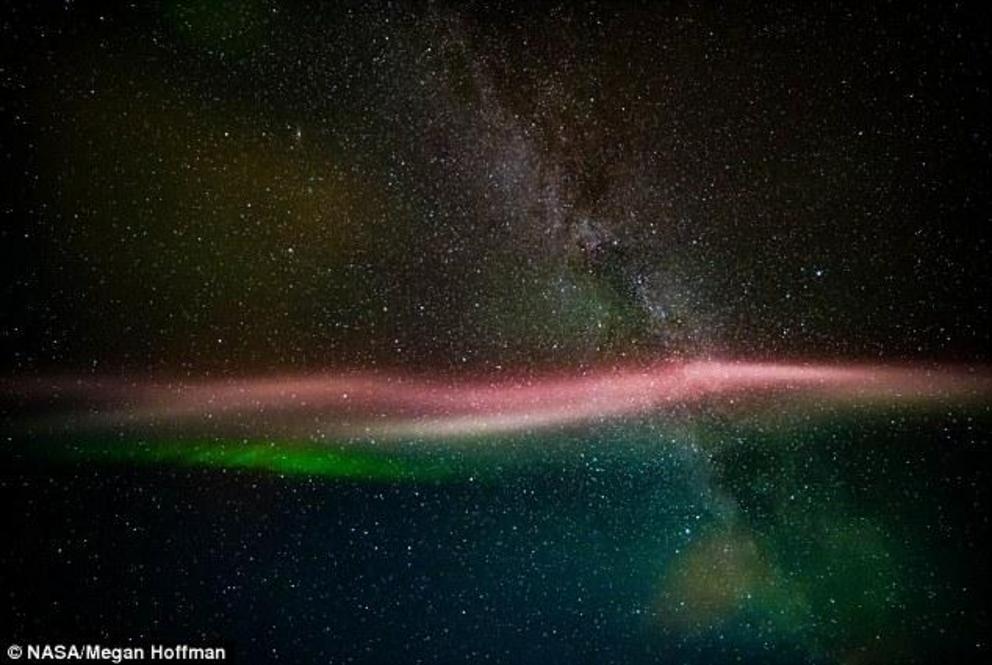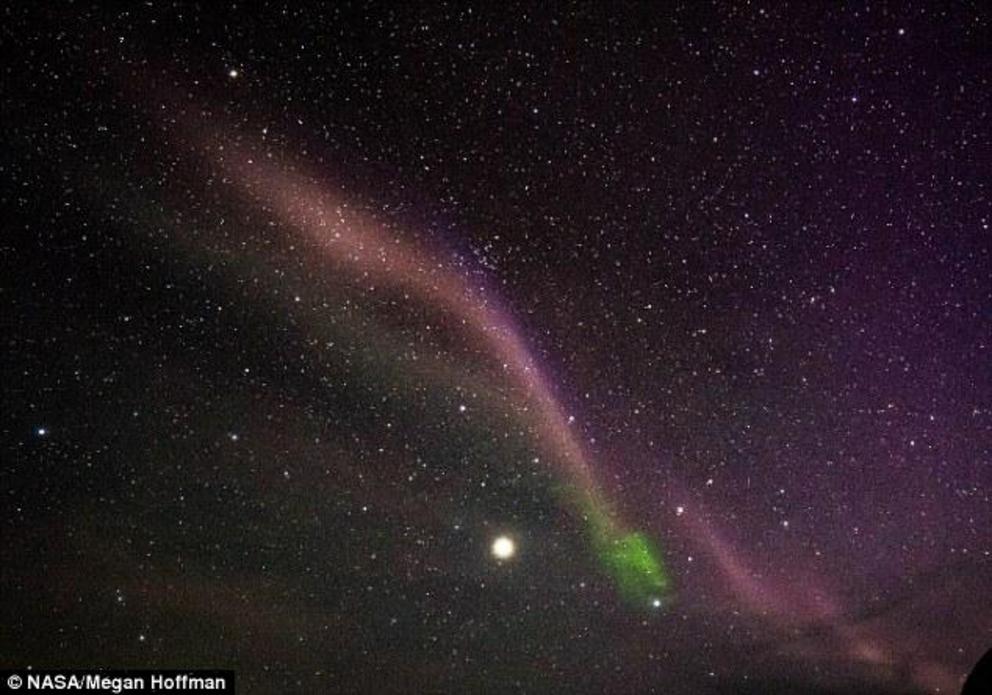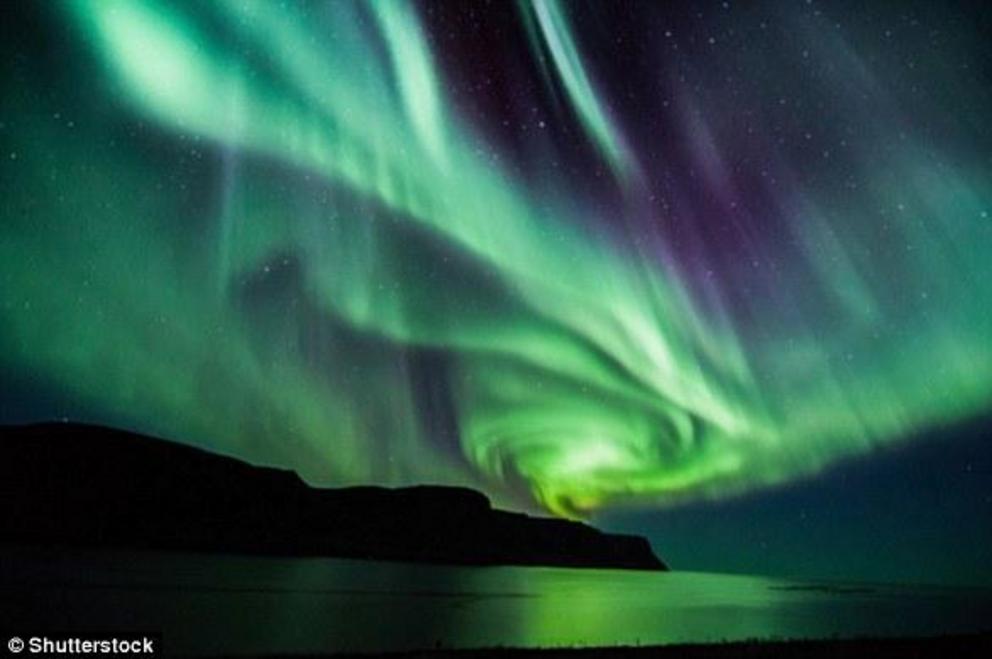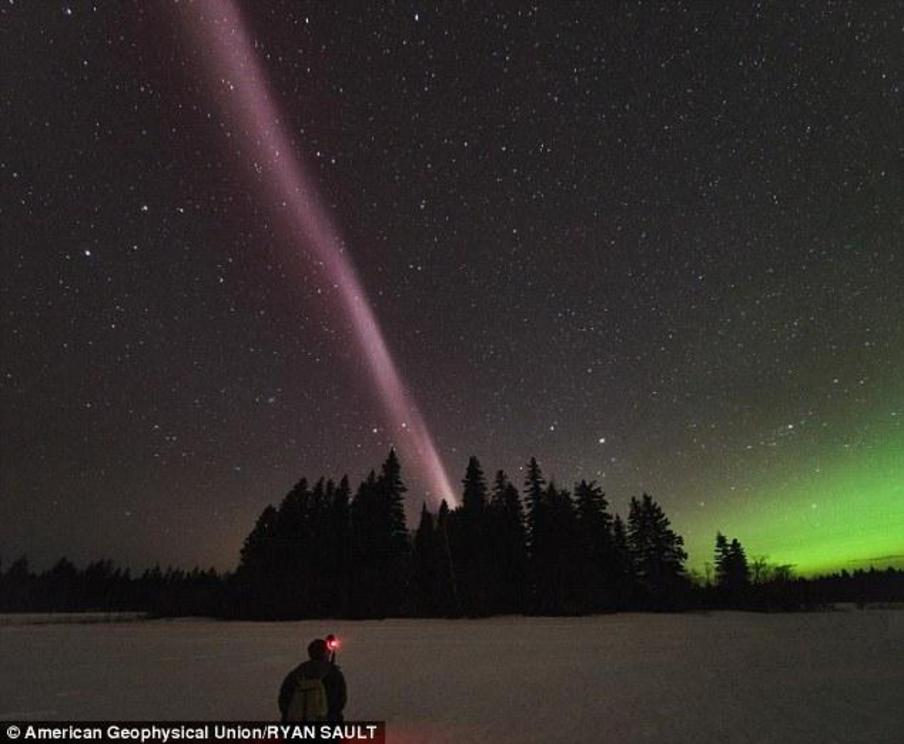Mysterious ribbons of light dubbed 'Steve'
... are NOT auroras, after all: scientists say the 'skyglows' represent an entirely new celestial phenomenon
- Scientists began studying mysterious ribbons of light dubbed 'Steve' in 2016
- While they were thought to be auroras, study shows they form differently
- Experts now say they're a distinct phenomenon that was previously unknown
Mysterious purple and white ribbons of light seen dancing across the sky may represent a never-before-identified type of ‘skyglow.’
While amateur photographers have been documenting the phenomenon for decades, scientists only began to study it back in 2016.
Initial research suggested the lights, which have come to be known as STEVE, may be a type of aurora, though slightly different than the ones we’re used to.
A new study, however, has determined that this is not the case; according to the researchers, STEVE is the result of different atmospheric processes, making it an entirely distinct phenomenon.
STEVE was initially given its name in honor of the 2006 film Over the Hedge, and the title was later accepted in the scientific community as a ‘backronym,’ standing for Strong Thermal Emission Velocity Enhancement.
This type of light event appears closer to the equator than a normal aurora.
In the latest study, researchers analyzed a STEVE event that occurred over eastern Canada on March 28, 2008.
The team compared images from ground-based cameras with data from the NOAA’s Polar Orbiting Environmental Satellite 17 (POES-17), which was overhead at the time and can measure charged particles raining down towards Earth.
Unlike a traditional aurora, which is produced as electrons and protons pour into the ionosphere, the researchers found there were no charged particles associated with the STEVE event.
This suggests it wasn’t an aurora at all.
‘Our main conclusion is that Steve is not an aurora,’ says Bea Gallardo-Lacourt, a space physicist at the University of Calgary in Canada and lead author of the new study in Geophysical Research Letters.
‘So right now, we know very little about it. And that’s the cool thing, because this has been known by photographers for decades.
 Initial research suggested the lights, which have come to be known as STEVE, may be a type of aurora, though slightly different than the ones we’re used to. A new study, however, has determined that this is not the case
Initial research suggested the lights, which have come to be known as STEVE, may be a type of aurora, though slightly different than the ones we’re used to. A new study, however, has determined that this is not the case
 STEVE was initially given its name in honor of the 2006 film Over the Hedge, and the title was later accepted in the scientific community as a ‘backronym,’ standing for Strong Thermal Emission Velocity Enhancement
STEVE was initially given its name in honor of the 2006 film Over the Hedge, and the title was later accepted in the scientific community as a ‘backronym,’ standing for Strong Thermal Emission Velocity Enhancement
WHAT ARE AURORAS AND WHAT TRIGGERS THE STUNNING NATURAL DISPLAYS?
The Northern and Southern Lights are natural light spectacles triggered in our atmosphere that are also known as the 'Auroras'.
There are two types of Aurora - Aurora Borealis, which means 'dawn of the north', and Aurora Australis, 'dawn of the south.'
The displays light up when electrically charged particles from the sun enter the Earth’s atmosphere.
 There are two types of Aurora - Aurora Borealis (file photo), which means 'dawn of the north', and Aurora Australis, 'dawn of the south.' The displays light up when electrically charged particles from the sun enter the Earth’s atmosphere
There are two types of Aurora - Aurora Borealis (file photo), which means 'dawn of the north', and Aurora Australis, 'dawn of the south.' The displays light up when electrically charged particles from the sun enter the Earth’s atmosphere
Usually the particles, sometimes referred to as a solar storm, are deflected by Earth’s magnetic field.
But during stronger storms they enter the atmosphere and collide with gas particles, including hydrogen and helium.
These collisions emit light. Auroral displays appear in many colours although pale green and pink are common.
‘But for the scientists, it’s completely unknown.’
Instead of being an aurora, the researchers say the STEVE events can be classified as a type of ‘skyglow.’
But, they still aren’t quite sure what’s causing them.
Researchers are now working to determine whether the lights are the result of particles in the ionosphere, or if they’re coming from a region higher up in the atmosphere.
Video can be accessed at source link below.

